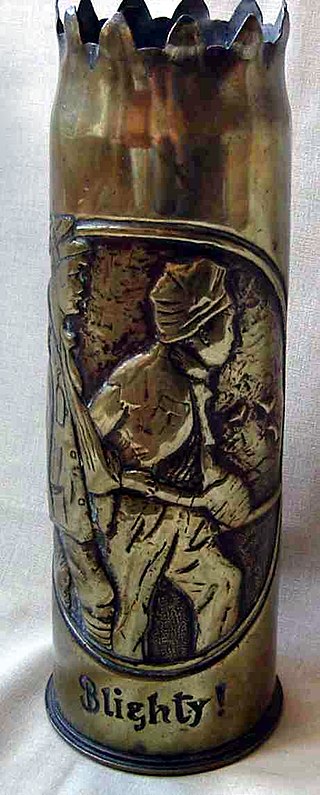
Modern Standard Hindi, commonly referred to as Hindi, is an Indo-Aryan language written in Devanagari script. It is the official language of India alongside English and the lingua franca of North India. Hindi is considered a Sanskritised register of the Hindustani language, which itself is based primarily on the Khariboli dialect of Delhi and neighbouring areas. It is an official language in nine states and three union territories and an additional official language in three other states. Hindi is also one of the 22 scheduled languages of the Republic of India.

Urdu is an Indo-Aryan language spoken chiefly in South Asia. It is the national language and lingua franca of Pakistan, where it is also an official language alongside English. In India, Urdu is an Eighth Schedule language, the status and cultural heritage of which are recognised by the Constitution of India; and it also has an official status in several Indian states. In Nepal, Urdu is a registered regional dialect and in South Africa it is a protected language in the constitution. It is also spoken as a minority language in Afghanistan and Bangladesh, with no official status.

Hindustani is an Indo-Aryan language spoken in North India, Pakistan and the Deccan and used as the official language of India and Pakistan. Hindustani is a pluricentric language with two standard registers, known as Hindi and Urdu. Thus, it is also called Hindi–Urdu. Colloquial registers of the language fall on a spectrum between these standards. In modern times, a third variety of Hindustani with significant English influences has also appeared which is sometimes called Hinglish or Urdish.

Desi is a loose term used to describe the peoples, cultures, and products of the Indian subcontinent and their diaspora, derived from Sanskrit देश, meaning 'land' or 'country'. Desi traces its origin to the people from the South Asian republics of Bangladesh, North India, and Pakistan, and may also sometimes include people from Bhutan, Maldives, Nepal, and Sri Lanka.

A cummerbund is a broad waist sash, usually pleated, which is often worn with single-breasted dinner jackets. The cummerbund was adopted by British military officers in colonial India, where they saw it worn by sepoys of the British Indian Army. It was adopted as an alternative to the waistcoat, and later spread to civilian use. The modern use of the cummerbund to Europeans and North Americans is as a component of the traditional black tie Western dress code.

Pardah or purdah is a religious and social practice of gender partition prevalent among some Muslim and Hindu communities. It takes two forms: social partition of the sexes and the requirement that women cover their bodies so as to cover their skin and conceal their form. A woman who practices purdah can be referred to as pardanashin or purdahnishan. The term purdah is also used to describe related practices, such as the pre-election period of sensitivity occurring in the weeks leading up to a general election or referendum.

"Blighty" is a British English slang term for Great Britain, or often specifically England. Though it was used throughout the 1800s in the Indian subcontinent to mean an English or British visitor, it was first used during the Boer War in the specific meaning of homeland for the English or British, and it was not until World War I that use of the term became widespread.
Hindustani or Colloquial Hindi or Simplified Urdu is one of the predominant languages of South Asia, with federal status in the republics of India and Pakistan in its standardized forms of Hindi and Urdu respectively. It is widely spoken and understood as a second language in Nepal, Bangladesh, and the Persian Gulf and as such is considered a lingua franca in the northern Indian subcontinent. It is also one of the most widely spoken languages in the world by total number of speakers. It developed in north India, principally during the Mughal Empire, when the Persian language exerted a strong influence on the Western Hindi languages of central India; this contact between the Hindu and Muslim cultures resulted in the core Indo-Aryan vocabulary of the Indian dialect of Hindi spoken in Delhi, whose earliest form is known as Old Hindi, being enriched with Persian loanwords. Rekhta, or "mixed" speech, which came to be known as Hindustani, Hindi, Hindavi, and Urdu, also locally known as Lashkari or Lashkari Zaban in long form, was thus created. This form was elevated to the status of a literary language, and after the partition of colonial India and independence this collection of dialects became the basis for modern standard Hindi and Urdu. Although these official languages are distinct registers with regards to their formal aspects, such as modern technical vocabulary, they continue to be all but indistinguishable in their vernacular form. From the colonial era onwards, Hindustani has also taken in many words from English, with an urban English-influenced variety emerging known as Hinglish.
The Persian language and Urdu have had an intricate relationship throughout the history of the latter. Persian historically played a significant role in the formation and development of the modern Urdu, and today acts as its prestige language.
Irregardless is a word sometimes used in place of regardless or irrespective, which has caused controversy since the early twentieth century, though the word appeared in print as early as 1795.
Hindustani, also known as Hindi-Urdu, is the vernacular form of two standardized registers used as official languages in India and Pakistan, namely Hindi and Urdu. It comprises several closely related dialects in the northern, central and northwestern parts of the Indian subcontinent but is mainly based on Khariboli of the Delhi region. As an Indo-Aryan language, Hindustani has a core base that traces back to Sanskrit but as a widely-spoken lingua franca, it has a large lexicon of loanwords, acquired through centuries of foreign rule and ethnic diversity.

The Hindi–Urdu controversy arose in 19th century colonial India out of the debate over whether Modern Standard Hindi or Standard Urdu should be chosen as a national language.
Hindustani is the lingua franca of northern India and Pakistan, and through its two standardized registers, Hindi and Urdu, a co-official language of India and co-official and national language of Pakistan respectively. Phonological differences between the two standards are minimal.
Purdah is the period in the United Kingdom between the announcement of an election and the formation of the new elected government. It affects civil servants, who must be politically impartial, preventing central and local government from making announcements about any new or controversial government initiatives that could be seen to be advantageous to any candidates or parties in the forthcoming election. Purdah does not apply to candidates for political office. Where a court determines that actual advantage has been given to a candidate, this may amount to a breach of Section 2 of the Local Government Act 1986.
Hindustani, also known as Hindi-Urdu, like all Indo-Aryan languages, has a core base of Sanskrit-derived vocabulary, which it gained through Prakrit. As such the standardized registers of the Hindustani language (Hindi-Urdu) share a common vocabulary, especially on the colloquial level. However, in formal contexts, Modern Standard Hindi tends to draw on Sanskrit, while Standard Urdu turns to Persian and sometimes Arabic. This difference lies in the history of Hindustani, in which the lingua franca started to gain more Persian words in urban areas, under the Delhi Sultanate; this dialect came to be termed Urdu.







